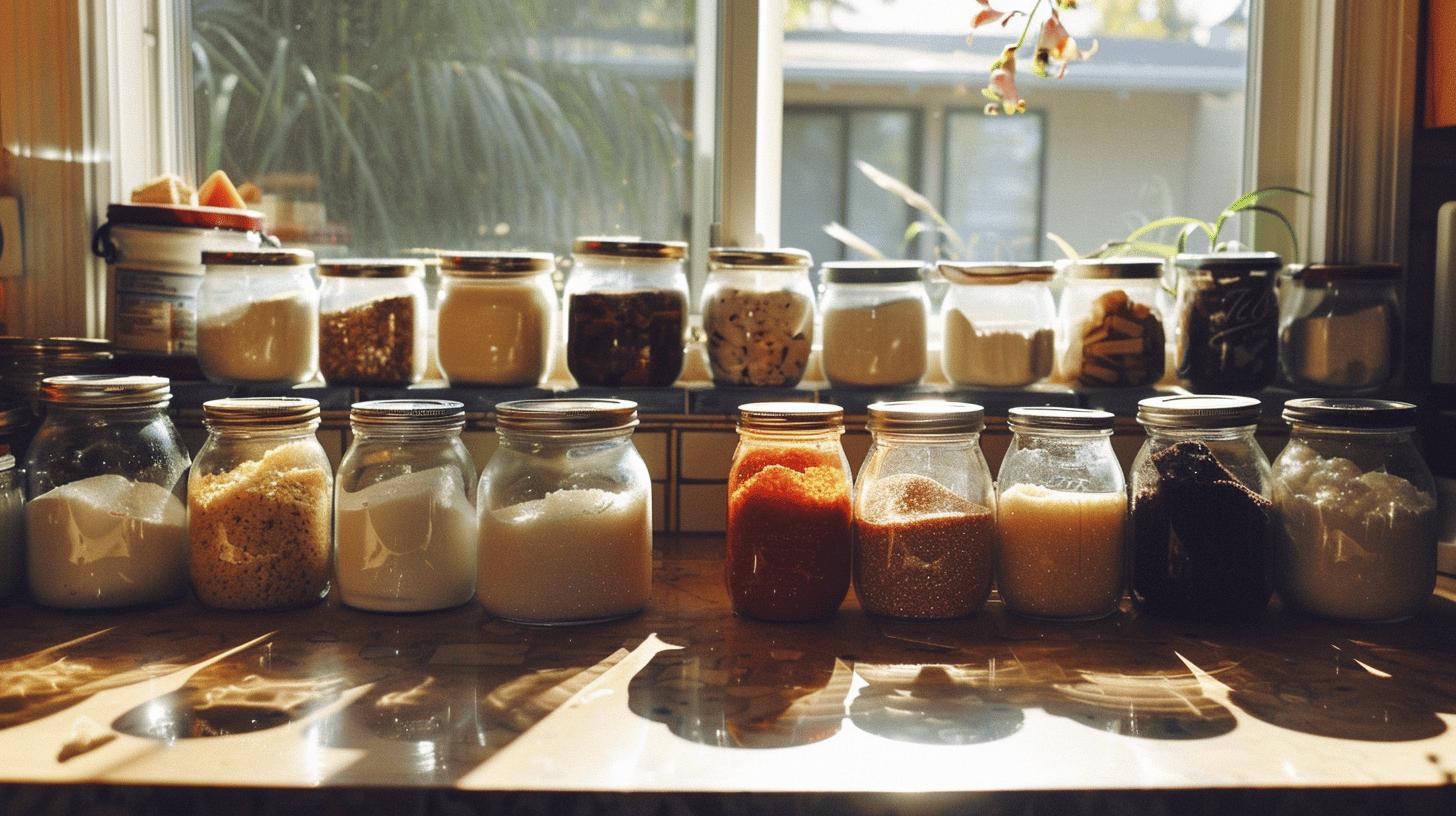Did you know sugar isn't just a single entity but a fascinating array of types each with distinct properties and uses? Understanding the nuances of various sugars, from ubiquitous granulated sugar to specialty varieties like muscovado, can transform how you approach cooking and baking. This article dives into the different types of sugar, focusing on their unique characteristics and how they can enhance culinary creations. By exploring these sweet variations, businesses can refine their product offerings and ensure high standards, meeting customer expectations effectively.
Understanding the Different Types of Sugar
Sugar classification reveals a spectrum of forms, each with distinct characteristics and applications. The primary types—glucose, fructose, sucrose, and lactose—play essential roles in culinary and dietary contexts. Glucose, a simple sugar, is a crucial energy source for the body, commonly found in fruits and honey. Fructose, another simple sugar, is sweeter and present in fruits and honey as well, often used in processed foods for its intense sweetness. Sucrose, or table sugar, is a disaccharide composed of glucose and fructose, widely used in both households and industries. Lactose, a sugar found in milk, is vital in dairy products and contributes to their nutritional value.
Granulated sugar, the most prevalent form in homes, is derived from sugarcane or sugar beets. Its neutral flavor and medium-sized crystals make it versatile for baking and beverages, where it aids in creating air pockets in batters. Brown sugar, characterized by its added molasses, provides a moist texture and richer flavor, ideal for baked goods such as banana bread. Powdered sugar, also known as confectioners' sugar, is finely pulverized and perfect for creating smooth frostings and dusting desserts. It often contains cornstarch to prevent clumping, enhancing its use in culinary applications requiring a fine texture.
- Granulated Sugar: Most common household sugar, versatile in baking and beverages.
- Brown Sugar: Contains molasses, offering moisture and rich flavor for baked goods.
- Powdered Sugar: Ideal for smooth frostings and dessert dusting.
- Glucose: Essential energy source, found in fruits and honey.
- Fructose: Intensely sweet, used in processed foods and naturally present in fruits.
Specialty Sugars and Their Unique Characteristics

Muscovado sugar, turbinado sugar, and demerara sugar are specialty sugars distinguished by their molasses content and distinctive textures. Muscovado sugar is a deeply colored, sticky sugar known for its rich molasses flavor, making it a popular choice in chocolate-based recipes where depth of flavor is essential. Turbinado sugar, often referred to as raw sugar, is less refined than traditional white sugar, retaining a light brown color and subtle molasses undertones. This sugar is commonly used in coffee shops, particularly for sweetening beverages, and its large crystals make it suitable for topping baked goods. Demerara sugar, similar to turbinado but with slightly smaller crystals, offers the same rich flavor with a crunchy texture, making it ideal for finishing touches on pastries and desserts.
Caster sugar and raw sugar play significant roles in baking due to their unique properties. Caster sugar, with its fine grains, dissolves rapidly, which is perfect for creating light-textured baked goods like meringues and sponge cakes. This quick-dissolving characteristic ensures a smooth batter, critical for achieving the desired texture in delicate recipes. Raw sugar, encompassing varieties like turbinado and demerara, is often used in recipes where the sugar's distinct flavor and texture can shine, such as in fruit-based desserts and toppings for muffins and cookies. Its less refined nature allows it to add a subtle, natural sweetness without overpowering the other ingredients.
| Sugar Type | Characteristics | Uses |
|---|---|---|
| Muscovado Sugar | Deep-colored, sticky, rich in molasses | Enhancing chocolate-based recipes |
| Turbinado Sugar | Less refined, light brown, subtle molasses | Sweetening beverages, topping baked goods |
| Demerara Sugar | Slightly smaller crystals, crunchy texture | Finishing touch on pastries and desserts |
| Caster Sugar | Fine grains, dissolves quickly | Light-textured baked goods like meringues |
Liquid Sugars and Sugar-Based Sweeteners
Liquid sugar and invert sugar are pivotal in both commercial and domestic culinary applications due to their ease of blending. What is liquid sugar? Liquid sugar is simply granulated sugar dissolved in water, facilitating uniform distribution in beverages and food products. It is widely used in commercial food production, particularly in the beverage industry, where consistency and ease of use are crucial. Invert sugar, created by splitting sucrose into glucose and fructose, offers enhanced sweetness and moisture-retaining properties. This makes it an ideal ingredient in confectionery and baked goods, where a smooth texture and extended shelf life are desirable.
Maple syrup and corn syrup are distinct in their origins and culinary uses. How is maple syrup produced? Maple syrup is derived from the sap of sugar maple trees, which is boiled down to concentrate its sugars, resulting in a rich, natural sweetener. Its unique flavor profile makes it a popular choice for enhancing both sweet and savory dishes, from pancakes to roasted vegetables. Corn syrup, on the other hand, is processed from cornstarch and is prevalent in the food industry due to its ability to prevent crystallization and maintain moisture. It is a common ingredient in candies, sauces, and soft drinks, valued for its neutral sweetness and stabilizing properties.
Honey stands out for its versatility and potential health benefits. What are the health benefits of honey? Honey, a natural sweetener produced by bees, contains antioxidants and possesses antibacterial properties, making it not only a culinary ingredient but also a natural remedy. Its complex flavor and ability to retain moisture make it a favorite in baking, where it contributes to the softness and shelf life of products like cakes and bread. Beyond baking, honey is used in dressings, marinades, and beverages, offering a natural alternative to processed sugars while adding depth to flavors.
The Role of Sugar in Baking and Cooking

Granulated sugar plays a pivotal role in baking due to its ability to create air pockets in batters, which contributes to the light and airy texture of cakes and cookies. This sugar type, with its medium-sized crystals, is fundamental in achieving the desired rise and texture in baked goods. What is the ideal sugar for banana bread? Brown sugar, with its added molasses, is ideal for banana bread as it imparts a moist texture and rich flavor, enhancing the overall taste and moisture retention. The molasses in brown sugar not only adds depth to the flavor profile but also aids in keeping baked goods fresh longer.
Powdered sugar, also known as confectioners' sugar, is essential for achieving smooth frostings and for dusting over desserts. Its fine texture allows it to dissolve rapidly, making it perfect for creating silky frostings that spread easily over cakes and pastries. What sugar dissolves quickly for light-textured goods? Superfine sugar, with its smaller grains, dissolves quickly, making it suitable for recipes requiring a smooth batter, such as meringues and sponge cakes. This quick-dissolving property ensures that the sugar blends seamlessly, preventing any graininess and ensuring a delicate texture in light-textured goods.
- Granulated Sugar: Creates air pockets, essential for cakes and cookies.
- Brown Sugar: Adds moisture and rich flavor, perfect for banana bread.
- Powdered Sugar: Ideal for smooth frostings and dessert dusting.
- Superfine Sugar: Dissolves quickly, suitable for light-textured baked goods.
Health Considerations and Sugar Alternatives
What are the health concerns associated with high fructose corn syrup? High fructose corn syrup (HFCS) is often scrutinized for its potential health impacts, particularly its association with obesity and metabolic disorders. As a prevalent ingredient in processed foods and beverages, HFCS is criticized for its high fructose content, which may lead to increased fat accumulation and insulin resistance when consumed in excess. This has led to a growing awareness of the need to monitor HFCS intake and consider the overall effects of traditional sugars on health. Traditional sugars, including refined white sugar and brown sugar, are also linked to similar health issues, prompting consumers to seek healthier alternatives.
What are some sugar alternatives, and how do they benefit health-conscious individuals? Coconut sugar and erythritol are two popular choices among sugar alternatives, each offering unique benefits. Coconut sugar is derived from the sap of coconut palms and is minimally processed. It retains nutrients like iron, zinc, and antioxidants, making it a more sustainable option with a lower glycemic index than regular sugar. Erythritol, a sugar alcohol, is valued for its low-calorie content and negligible effect on blood glucose levels. It provides sweetness without the added calories, making it suitable for those managing weight or diabetes. These alternatives support a balanced diet by reducing the reliance on high-calorie, high-glycemic sweeteners.
- Coconut Sugar: Sustainable, low glycemic index, rich in nutrients.
- Erythritol: Low-calorie, minimal impact on blood glucose.
- Stevia: Natural, zero-calorie sweetener, widely used in beverages.
- Monk Fruit Sweetener: Natural, zero-calorie, suitable for baking.
- Agave Nectar: Low glycemic index, used for its mild flavor.
Final Words
Exploring the various types of sugar reveals their unique characteristics
and specific culinary purposes, from granulated and brown sugar to specialty
and liquid varieties. Understanding these differences enhances the baking
experience, offering precise uses tailored to different recipes. The
discussion also highlights sugar alternatives and health considerations,
emphasizing informed choices in sugar consumption. As the food industry
continues to innovate, recognizing the diverse roles of sugars ensures
better-quality products and meets diverse dietary needs, fostering a balance
between taste and health benefits.
FAQ
What are the three main types of sugar?
The three main types of sugar are glucose, fructose, and sucrose. These sugars vary in structure and function, impacting their use in food processing and their effect on the human body.
Which is the healthiest sugar?
Among sugars, options like honey and maple syrup are considered healthier due to their less refined nature and additional nutrients such as antioxidants and minerals. However, moderation is essential in sugar consumption for health.
What are the 4 types of sugar?
The four types of sugar often referred to are glucose, fructose, sucrose, and lactose. Each type plays a different role in nutrition and food processing, contributing to flavor and energy.
What are the 11 common forms of sugar?
Common forms of sugar include glucose, fructose, sucrose, lactose, maltose, galactose, trehalose, allulose, turbinado, muscovado, and Demerara sugar. These sugars vary in sweetness and use in culinary applications.
What types of sugar are used in baking?
Granulated sugar, brown sugar, powdered sugar, and superfine sugar are commonly used in baking. Each type affects texture, moisture, and sweetness in baked goods, enhancing specific recipes like cakes and cookies.
What is Demerara sugar used for?
Demerara sugar, with its large, golden crystals, is ideal for adding crunch to toppings and desserts. Its mild molasses flavor enhances baked goods, coffee, and other beverages.
What are specialty sugars and their uses?
Specialty sugars include muscovado, turbinado, and caster sugar. Muscovado's rich taste suits chocolate recipes, while turbinado's mild flavor works well in beverages. Caster sugar, with its fine texture, is excellent for baking.

